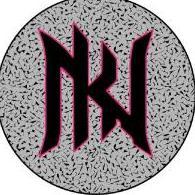-
Posts
5,713 -
Joined
-
Last visited
Profile Information
-
Location
Germany
-
Interests
Restoring vintage Singer sewing machines.
Recent Profile Visitors
43,218 profile views
Constabulary's Achievements

Leatherworker.net Regular (4/4)
-
My response was a bit short I guess. Well, we have not seen the machines but I would assume that the 211´s are old factory machines that probably have been stored for maybe decades (we do not know, do you?). You for sure will need a new motor (Servo motor + maybe a speed reducer for better speed control) and depending on the wear you may need a new hook and maybe a new timing belt. Replacing a timing belt on a 211 is no fun work IMO due to the shaft bearing on the hand wheels end. So if you are able to replace the parts by your self. And since we have not seen the machine it may need some more bits too. You may need $100+ for the motor + maybe $150 for the speed reducer (if needed) and maybe $50+ for additional parts (all guessing) and your time for repair and adjustment work. So a lot of guessing here. Pictures of the actual machine(s) may help. The machine it self could probably sew what you what (as AlZilla already said) but it is meant for flat work and not really for sewing over thicknesses. There are for sure better machines for leather work. Triple feed machines are a lot more versatile than needle + drop feed machines, especially when it comes to accessories like presser feet and so forth. My 2 cents.
-
its a needle feed + drop feed machine w/o reverse. you find some main information in the service manual (1st google hit on my end) I would not buy it. Singer 211W151.pdf
-
College Sewing is back: https://www.college-sewing.co.uk/catalogsearch/result/index/?cat=3&q=tapered+bore&p=1 but I´m sure most sewing machine dealers in the US can get you tapered bore pulley as well. Maybe worth checking with Toledo Sewing Machines
-
What country do you come from? College Sewing and Trojan Sewing in the UK have tapered bore pulleys. I cannot reach the College Sewing website atm seems it is down for maintenance or so https://www.trojansewing.co.uk/?s=tapered&post_type=product&type_aws=true
-
I'll get a new left toe foot but have to place a new order - thats okay for me considering the fairly low price of the feet. They for sure have something I could use. I also found some interesting cheap feet for the Adler 67, 167, 68, 168, 69, 169, 267 and so forth "line" in their store: https://de.aliexpress.com/item/1005008687919538.html nutin for me Singer Idjit but looks like a good deal for the Adler folks 😉
-
Here is a parts diagram of the Adler 20-20 - hope it helps Adler_Parts_class_20-20.pdf
-
I may have a hard copy of the 20-20 parts list, not sure though. I´ll check that in the days to come... stay tuned... 😉
-
They have arrived! Took 10 days from China to Germany and no extra charge. I´m using them on my 111G156. First glance.... The "fork" foot set works fine and line well with my feed dog - no issues. The right toe foot is touching the thread guide but the one I have installed is not the "original" one I have one from a 211 so that is on me. The left toe foot does not fit into the foot bar. The end that goes into the foot bar fork is a bit thicker than on the other feet It also has a different finish, the other feet fit well. Maybe I´ll do some grinding but I´ll check with the seller first. The scissors are sharp a hell. I ordered them for just having a pair in my tool box. REALLY SHARP!!!
-

Need reverse feed parts for Singer 211G156
Constabulary replied to Art Bailey's topic in Leather Sewing Machines
since you are in the USA I´d contact a sewing machine dealer in you area. I´d probably check with Toledo sewing machines https://www.tolindsewmach.com/parts.html They for sure can get you the parts you need or even have them in stock.








